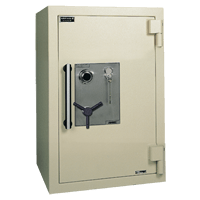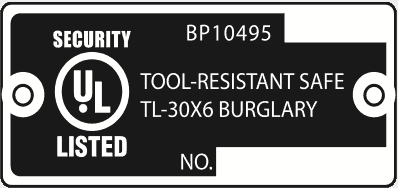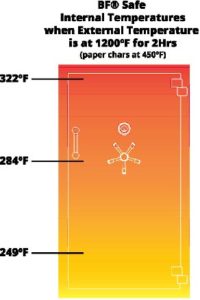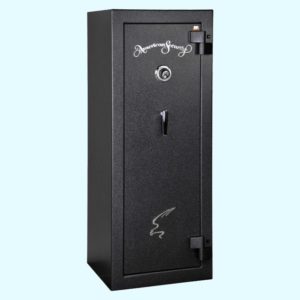 There’s a lot more to safes than first meets the eye. They’re unassuming enough at first glance, but there’s an impressive level of engineering that goes into each one, and especially among safes that are designed for maximum security. With that in mind, it can be an intimidating experience picking out a safe for the home or business, but there are some features and traits to look for in any security container. It’s important, then, that prospective buyers know what to ask. And as for what to ask, here are the essential questions:
There’s a lot more to safes than first meets the eye. They’re unassuming enough at first glance, but there’s an impressive level of engineering that goes into each one, and especially among safes that are designed for maximum security. With that in mind, it can be an intimidating experience picking out a safe for the home or business, but there are some features and traits to look for in any security container. It’s important, then, that prospective buyers know what to ask. And as for what to ask, here are the essential questions:
Is that safe rated for burglary protection?
 Let’s first get rid of a couple terms here. Burglary “proof” or “resistant” don’t mean anything on their own. Sometimes, a safe manufacturer may market their product using these terms, but these shouldn’t be the terms that buyers look for.
Let’s first get rid of a couple terms here. Burglary “proof” or “resistant” don’t mean anything on their own. Sometimes, a safe manufacturer may market their product using these terms, but these shouldn’t be the terms that buyers look for.
What they should look for is whether or not the safe is UL certified. UL, or Underwriters Laboratories, has the best safe-crackers in the world, and they are tasked with testing safes for their defense. If UL safe-crackers have trouble opening up a security container, it’s almost a guarantee that most burglars will as well.
There are several levels of UL certification, depending on how long it takes for UL crackers to get into the safe. For home applications, an RSC rating is largely considered the minimum for security. In high security commercial applications, TL-15, TL-30 and TL-30×6 ratings are more appropriate. UL assigns these ratings by running the safe through a battery of tests and by analyzing the safe’s construction. Again, if UL crackers can’t get through right away, the average criminal doesn’t have a chance.
Will the safe protect valuables from a fire?

 Maybe, maybe not. Again, don’t look for terms like “proof” or “resistant” unless they are backed by UL or ETL certification. Both organizations take a similar approach to testing a safe’s fire protection capabilities. In short, heat sensors are placed inside the safe and then it’s placed in a test oven where an evenly distributed fire heats the safe up. Throughout the test, the interior temperature is monitored, and if it ever climbs above 350-degrees Fahrenheit, the test is considered a failure.
Maybe, maybe not. Again, don’t look for terms like “proof” or “resistant” unless they are backed by UL or ETL certification. Both organizations take a similar approach to testing a safe’s fire protection capabilities. In short, heat sensors are placed inside the safe and then it’s placed in a test oven where an evenly distributed fire heats the safe up. Throughout the test, the interior temperature is monitored, and if it ever climbs above 350-degrees Fahrenheit, the test is considered a failure.
When a safe is UL or ETL rated, it means that the safe maintains an interior temperature of 350-degrees or below at the target test temperature and for the target amount of time. So in short, a UL fire rated 120-minute safe will keep an interior temperature at or below 350 degrees for two hours during a typical house fire (most house fires max out at 1200 degrees Fahrenheit).
That 350-degree mark is important, because if it gets any higher, paper will start taking damage.
Will a fire rated safe protect data?
Data, such as flash drives, will be ruined at a much lower temperature, so if data protection is required, consider adding another layer of fire protection inside the safe, like a fire proof drawer.
How reliable is that lock?
It largely depends on the lock’s manufacturer. Get familiar with the kind of lock makers that can be trusted. Some of those brands include American Security (or AMSEC), LaGard, Kaba and Sargant & Greenleaf. Those manufacturers produce mechanical and electronic locks that are generally considered to be reliable and difficult to bypass.
Some signs of a cheap lock include locks that are glued on or electronic locks that have their “brains” on the outside. Electronic locks should have their sensitive parts installed inside the safe, and mechanical locks should be bolted to the door.
A reputable seller isn’t going to offer a safe that comes with a poor lock, but it’s best to ask about the lock’s failure rate, just to be sure.
How big should a safe be?
Again, it depends. And it depends on what is going to be stored inside. Big safes obviously offer a premium in interior space, but they are heavy and are harder to conceal. Small safes can be hidden, especially wall or floor safes, which tend to be on the smaller side.
It’s also worth considering where the dollars should be spent. Bigger safes are more expensive, and better fortified safes are more expensive. Buyers get what they pay for. So is a more secure safe the priority, or one that offers maximum room? That’s the fine balance to strike. In general, smaller, secure safes are better for guarding cash and jewelry in a residential setting. Commercial safes have to be larger to handle additional assets.
Gun safes require additional considerations. Although security is still a concern, space tends to be the bigger issue, because firearms are big. A common mistake that gun collectors make is buying a gun safe that is too small. Always go a bit bigger than needed, because that space will eventually be taken up, and it’s hard to replace one heavy safe with another.
Speaking of heavy, is weight an issue?
Only in a few circumstances. For the most part, a safe will not damage, or even stress a floor. The real issues emerge when a safe is installed on an upper floor, as this is where the ceiling joists will be put to the test. If a safe is in the 800-1,000 pound neighborhood, it may be necessary to reinforce the joists. It depends on the safe’s footprint, as weight will be less of a concern if it is distributed over a larger area.
When dealing with particularly heavy safes, like those above 1,000 pounds, consider hiring an architect to inspect the building just to be sure. Modern buildings can usually tolerate safes up to this weight, but anything more and it will warrant investigating.
Do safes come with a warranty?
Reputable manufacturers and sellers do provide warranties for their products. These warranties typically cover burglary, and often cover fire. A 1-year warranty is the standard.
Now there’s plenty of knowledge to take to the safe dealer. Bring those questions along, and it will be much easier to make an informed decision on the perfect safe.
